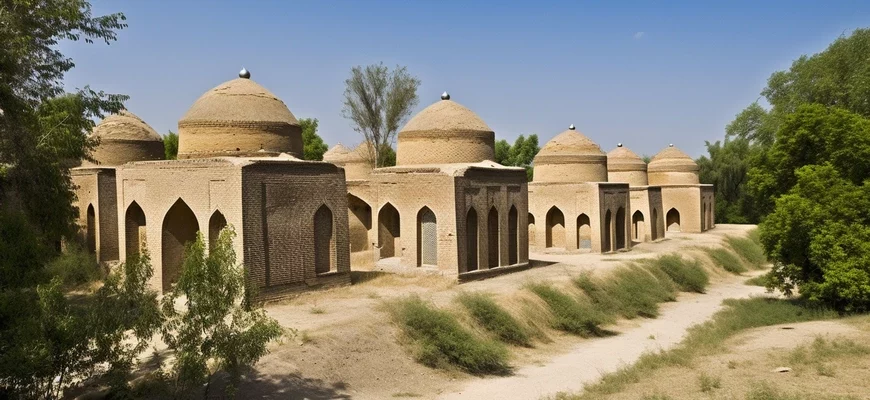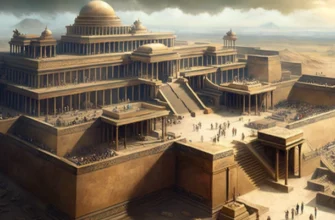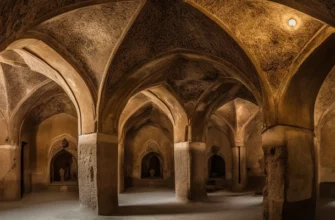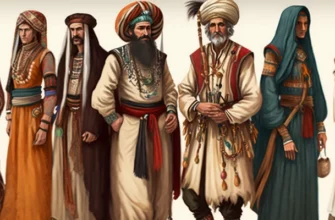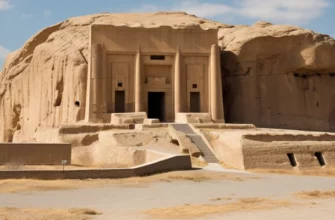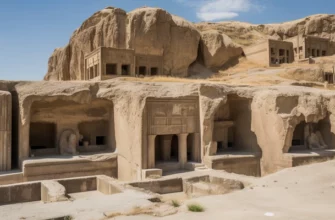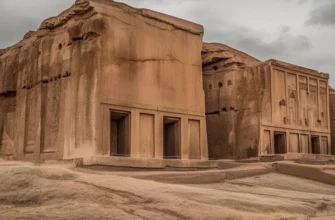The Arshakid state existed on the territory of modern Armenia and neighboring lands from 54 to 428 AD. It was founded by Arshak I after the overthrow of the Parthians. The state was religiously diverse, but Christianity became the state religion. During the Arshakid period, architecture, art, science, and literature flourished. With the fall of the state, a new era in Armenian history began.
Geographical location and historical context
The Arshakid state was located in the mountainous region of the Eastern Caucasus, at the crossroads between Europe and Asia. Its territory covered most of modern Armenia and some areas in neighboring countries, including Azerbaijan and Iran.
The historical context of the Arshakid era was complex and chaotic. During their reign, there were frequent wars with the Roman Empire and Sassanid Persia, as well as changes in power and socio-economic crises in the state.
However, despite these difficulties, the Arsacids managed to create a strong state with a developed culture and art that lasted for many centuries. Their achievements left a noticeable mark on the history of not only Armenia, but the entire region.
The formation of the Arshakid state
The Arshakid state was formed in the 1st century AD after the fall of the Second Armenian Empire. This period was characterized by political and social instability in the region, caused by changes in the power of the Roman Empire and Sassanid Persia.
In this context, the Arsacids were able to unite the various tribes of Armenia and create a state with its capital in Vagharshapat. Under their rule, the state experienced significant prosperity and became one of the largest and most powerful states in the region.
The formation of the Arshakid state was an important stage in the history of Armenia, which marked a new era in its development and determined its place in the region.
The rise and fall of the Arshakid state
The Arshakid state, founded in the 1st century AD, reached its peak during the reign of Vagharshak II (Վահարշակ Բ) in the 2nd century AD. During his reign, important reforms were carried out in the army, economy, and culture. During this period, significant progress was made in supporting national identity and consolidating political power.
However, after the death of Vagharshak II, the state gradually weakened under the pressure of external invasions and internal conflicts. In the 4th century AD, Armenia was conquered by the Persian king Shapur II, and the Arshakid state was abolished.
After that, several state formations were created, which continued to develop culture and other aspects of society based on the traditions of the Arshakid state. In the 7th century AD, the Bagratid Kingdom was founded, which became a new center of culture and art in Armenia.
Overall, the Arshakid state left a significant impact on the history and culture of Armenia and the entire Eastern Caucasus. It became a symbol of national independence and achievements in the cultural and political spheres, which played an important role in shaping the identity of the people.
Wars and conflicts with neighboring states
The Arshakid state faced various enemies and competitors, including the Roman Empire and the Persian state. In the 1st-2nd centuries AD, two wars with Rome took place, after which a peace treaty was concluded, which ensured Armenia’s relative independence from Rome.
In the 4th century AD, the Persian Empire under the leadership of Shapur II captured Armenia after a long conflict. After that, several state formations were created on the territory of former Armenia, which continued to develop on the basis of the traditions of the Arsacid state.
In general, wars and conflicts with neighboring states were a serious test for the Arsacid state, but it managed to withstand these trials and achieve significant success in preserving its national identity and consolidating political power.
Reasons for the fall of the Arshakid state
The reasons for the fall of the Arshakid state were quite complex and related to changes in the geopolitical environment and internal conflicts. In particular, in the 4th century AD, the Persian state captured Armenia and began a policy of resettling Persian colonists on its territory.
In addition, internal conflicts between the rulers of the state and a change of dynasty in the 5th century AD led to political instability and the weakening of the state. Finally, at the beginning of the 7th century AD, the Arab Caliphate conquered Armenia, leading to the disappearance of the Arsacid state.
Culture and art during the Arsacid era
The Arsacid era was a period of cultural and artistic flourishing in Armenia. Under their rule, architecture, sculpture, painting, and other arts developed.
Architectural masterpieces of the Arsacid era include temples, fortresses, palaces, and other buildings. The most famous of these are the Garni Temple and the palace in Artik. The Garni Temple is considered the greatest monument of Armenian culture and one of the most outstanding architectural masterpieces of the Eastern Caucasus.
Sculpture stands out in the art of the Arshakid era, represented mainly by portrait busts, statues, and reliefs. Among the most famous sculptures are busts of kings and other prominent figures, characterized by detailed facial features and costumes.
Also, during the Arshakid era, book printing and the art of manuscripts were developed, which allowed a significant amount of information about the culture and history of Armenia to be preserved. Overall, the culture and art of the Arshakid era are among the most important achievements in the history of Armenia and the entire Eastern Caucasus.
Conclusions
The Arshakid state was an important historical phenomenon that took shape in the context of geopolitical and cultural interaction between different peoples. It ensured the development of culture, art, science, and the economy in the region, and also strengthened relations with the Roman Empire.
However, the fall of the state was the result of external and internal factors, such as wars with neighboring states, a change of dynasty, political instability, and the resettlement of foreigners in the territory of the state.
Nevertheless, the cultural and historical contribution of the Arshakid state to the development of world history remains significant and important for research.
